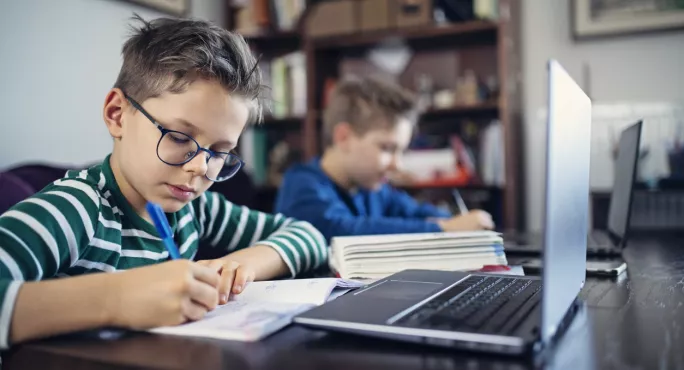On 11 March, president Martín Vizcarra announced that all of Peru’s schools would close for two weeks due to Covid-19. Private schools were only in their second week of classes, meaning that teachers had almost no time to get to know their students.
The shutdown has now turned into three months of the country struggling to contain the pandemic, meaning that online classes could run until the end of the year in December 2020.
Becoming another voice behind a screen has made it challenging to forge positive relationships with my students. And with lockdown continuing in many countries across the world, starting a new school year from a distance looks like a distinct possibility for many teachers.
Coronavirus: The challenges of remote teaching
From the outset, it was clear that this was going to be a challenge for me. The first two students who entered my online “classroom” called me a different teacher’s name. Not a great start. Then it got worse: a student who I had already met in real life greeted me with “Hi, Miss!”
I tried to make light of the moment by responding with my best female teacher voice. My class enjoyed my response, but this moment made it clear to me that online learning would create a significant barrier between students and their teacher.
From that day on, Miss Brasseur, I mean Mr Brasseur, has had to adapt. I’ve had to find innovative ways to build relationships with my students. This has been particularly challenging with my youngest secondary class, since I had never taught any of the students before.
Getting to know your students remotely
Here are some methods that have worked for me:
1. Greetings as usual
Greet you students individually as they enter your online classroom (similar to greeting them at the door as they enter a physical classroom).
2. Keep the chit chat
Encourage your students to arrive early to online classes, so you can engage in informal conversations.
3. Use video to get to know each other
Ask your students to complete video assignments on applications like Flipgrid or Padlet to help you get to know them better, and send them videos back.
4. Recreate those informal moments
Use smaller breakout rooms on Zoom or Google Meet and circulate between these rooms to talk and work with students on a more personal level.
5. Don’t rely on ‘send to all’
Send your students direct and personalised communication by using applications, such as Talk and Comment or Google Hangouts, so no student feels neglected.
6. Share ‘office hours’
Schedule online virtual desk hours and encourage students, who may not feel comfortable asking a question in live lessons, to talk to you privately.
7. Don’t lose sight of what matters
Always put your students’ wellbeing first, even if it means setting aside or eliminating some activities for those who are noticeably struggling.
8. Laughter builds relationships
Make lessons interactive, varied and fun. You could try incorporating Bit emojis of yourself, or creating a full classroom scene
Just like in the classroom, you should teach with enthusiasm and energy, since your positivity will spread to your students.
9. Don’t forget about pupil voice
Let your student know that their opinion matters by asking for feedback on lesson structures with surveys.
Overall, this is an ideal time for teachers to broaden their digital teaching skills and to connect with their students through edtech tools. This will allow teachers from different generations to advance digital skills and to relate better to generation Z. Besides, it is never too late to become a TikTok teacher influencer.
Brad Brasseur is a humanities teacher at an international British School in Lima, Peru


